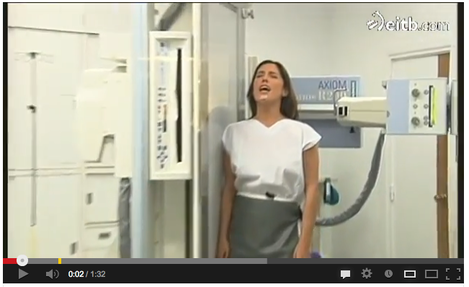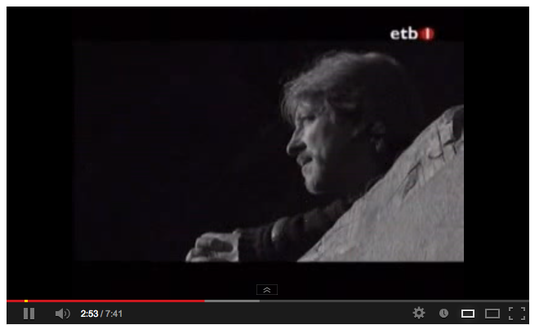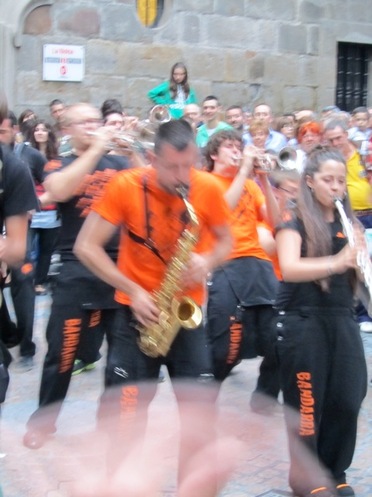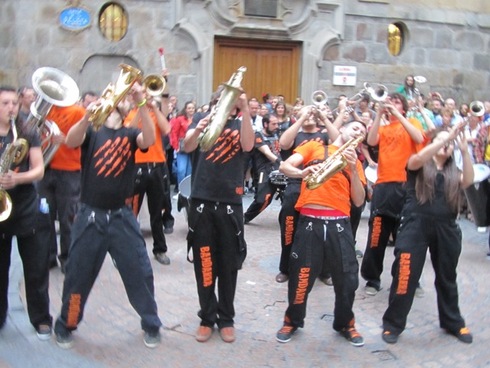Regular followers of the blog may remember that shortly after we arrived in Bilbao, I wrote an excited post about the phenomenon of the Bertsolariak – a very ancient Basque folk tradition of competitive improvised verse chanting originally done by shepherds, and now appropriated by students, literary types and others as part of the post-Franco Basque cultural revival.
This remains perhaps the most fascinating thing we’ve discovered here. Since the whole thing takes place in Euskara, our appreciation of it has obviously been somewhat limited, but we’ve learnt enough about it, and seen enough of it, to get a pretty good idea of what it involves and how extraordinary it is – helped by a great documentary about it (with English subtitles): ‘Bertsolari’ (www.bertsolarifilm.com). It has been fascinating to see a place where a creative verse tradition has real value amongst young people. Although it is quite, quite different from rap, it is nevertheless similar in the way in which it offers young people a participatory way into word-crafting, and thus it has been of particular interest to me as an English teacher, especially since the teaching of poetry is one of my main research interests. (I have recently had a chapter published entitled ‘Exploring Resistance to Poetry in Advanced English Studies’ (Making Poetry Matter, Bloomsbury 2013, www.bloomsbury.com/uk/making-poetry-matter-9781441101471) – and the phenomenon of Bertsolarism resonates clearly with some of the issues I raise there.)
Anyway, that post was meant to be the first of a series of three on Basque folk culture – verse, music and dance. I have been putting off writing the other two because there’s so much to say about them and I wanted to learn more about them, but now I have come to the last weeks of this blog and I can put it off no longer. So here goes. Folk music....
Difficult to sum up what Basque folk music is like. It has, of course, many of the generic elements of European folk music – and certainly some of it contains things that are similar to the Celtic tradition (although the Basques are not at all Celtic). But it also has elements that are very distinctive. Like most folk music cultures it is very heterogeneous, too, with very different types of music and different instrumental combinations for different cultural contexts, and with different strands of development. Some styles, for instance, sound a little more ‘Celtic mainstream’ whilst others sound more exotically Basque. And then there are the differences between marching music, dance music, song and so on.
Any account of Basque folk music should probably start with the ‘txistu’, the Basque pipe played by a ‘txistulari’ – a piper. The txistu is heard in a variety of contexts, but perhaps the most common is in marching bands with drums. The txistu is played with just one hand, whilst the other hand is used for drumming.
There are of course a number of celebrated Basque folk singers and players who have helped to promote folk music – and very importantly the Basque language – and keep it alive and thriving in the post-Franco years, and who have also taken it in new directions. Top of the list are Mikel Laboa, Benito Lertxundi, Joseba Tapia and Kepa Junkera.
Mikel Laboa (1924-2008) is seen as the father of the Basque folk revival – very much the Ewan McColl/Bob Dylan/Joan Baez of the Basque Country. Famous particularly for his song ‘Txoria txori’ (‘A bird is a bird’, covered at one point by Joan Baez), he sang with Bob Dylan at a concert for peace in San Sebastian shortly before he died. He performed classic folks songs, and his own folk compositions, as well as settings of poetry, and some more experimental music. He has a rather thin reedy voice, but some of his performances are extraordinary. Here’s a video of his most famous song ‘Txoria txori’, a song about freedom which almost has the status of a Basque anthem: http://www.youtube.com/watch?v=0NW7CZxOxhI. And here’s the Guardian’s obituary of Mike Laboa: http://www.theguardian.com/music/2008/dec/09/mikel-laboa-obituary
Finally, here’s a video of three very Basque young men playing in a very typical band with txistu, trikitixa and tambourine: http://www.youtube.com/watch?v=eWYFunYol24






























 RSS Feed
RSS Feed